Lancashire Marine sets record for rowing across the Atlantic
and live on Freeview channel 276
A Royal Marine from Lancashire has officially completed the world’s most dangerous row – crossing the Atlantic Ocean from New York to London in a rowing boat.
Jordan Swift, 28, from Eccleston, was part of a four-man Royal Marine Commando team which started the crossing back on May 31, eventually finishing at London Tower Bridge on August 11, almost 4,000 miles and 72 days after setting off.
Advertisement
Hide AdAdvertisement
Hide AdIn the process, the team of Simon Chalk, Matt Mason, Ian Clinton and Jordan also broke the transatlantic world record. The main purpose of the trip was to raise awareness of conservation of the world’s ecosystems – primarily to cut down on plastic in our oceans.
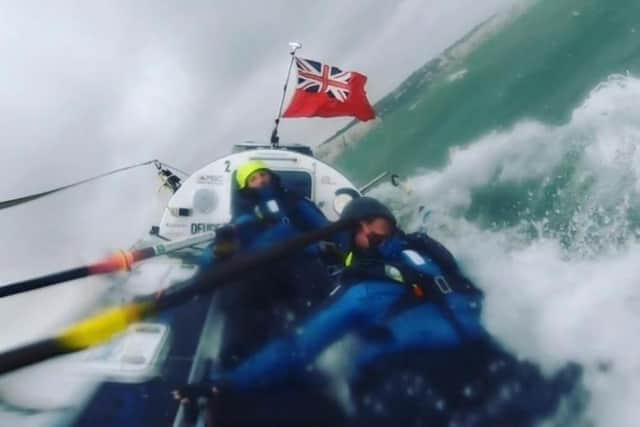

They were greeted back in London to rapturous scenes, with hundreds of family members and friends there to greet them. This included the national news, with Sky and CNN recording live when the team arrived back at Tower Bridge.
The route they had taken had never been done before, and while it was not the first time the Atlantic had been crossed in a rowing boat, it was not only the quickest crossing but also took on an untested route.
The crew experienced some of the world’s toughest rowing conditions and had to hang on through the tail end of two hurricanes as they entered the Gulf Stream, making the achievement even more incredible.
Advertisement
Hide AdAdvertisement
Hide AdJordan said: “The physical aspect of the row wasn’t the hardest part. Although we experienced a lot of pain from our hands due to blisters, and bum sores from being sat in the rowing saddle, this was nothing compared to the mental disintegration we faced being on that boat.
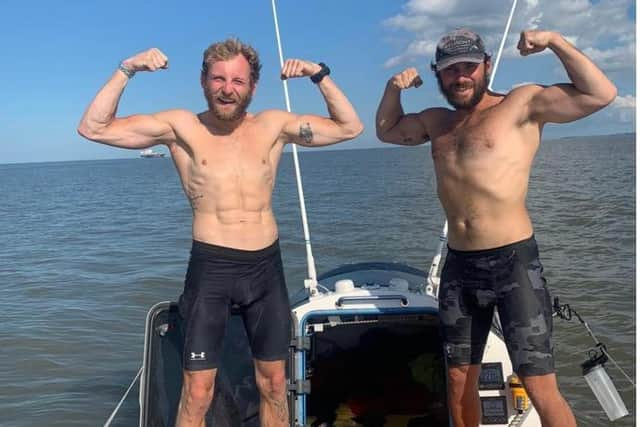

“To be constricted to confined spaces constantly and being cooped up next to someone when the storms hit for days on end, I can’t really tell you how tough that was. Being sat on para-anchor was the worst experience by far.”
The para-anchor is used to secure the boat when the conditions are too difficult to row. If a storm hits, or even worse a hurricane, then the para-anchor stabilises the boat while the crew ‘rest’ inside the cabins at either end. Normally these would be one man sleeping cabins, as the other two members of the boat row.
Sheltering in the confined space becomes even more challenging when the boat is being flung around by the waves. Thankfully, the boat is designed to correct itself if it tips over, giving the men a little bit of comfort even in the worst conditions.
Advertisement
Hide AdAdvertisement
Hide AdDespite this, and the constant lack of sleep as they continually rowed for two hours on, two hours off, the pros far outweighed the cons for the team.
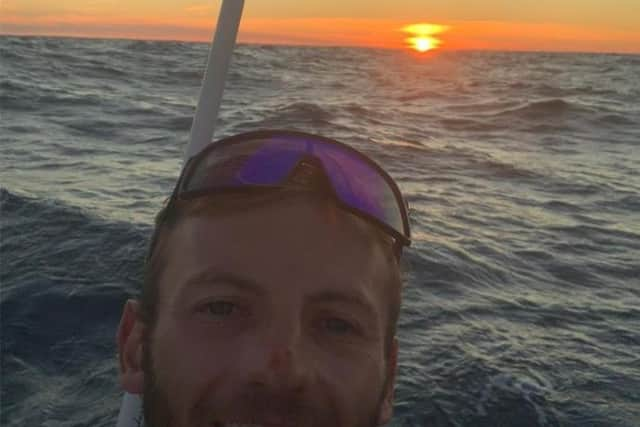

Jordan revealed one of the perks was seeing some of the most incredible wildlife and having the chance to row – and occasionally swim – across and in the Atlantic.
He said: “For all those frustrating days and nights sat on the anchor not moving, at the mercy of the weather, we had so many days when it was just pure joy be out there. When the sea was still, and the sun was rising and setting across the Atlantic, I can’t tell you how beautiful and calm it was.
“All the pressures and stresses of life are taken away from you, as your only focus is how far we can row on this day. It was also exhilarating to row in tougher conditions, when you are rowing up waves the size of buildings before they come crashing down over you.
Advertisement
Hide AdAdvertisement
Hide Ad“It kicks off your primal and survival instincts, and at the end of those shifts I would never want to come off the saddle from rowing. I would be in the cabin waiting to get back out there.”
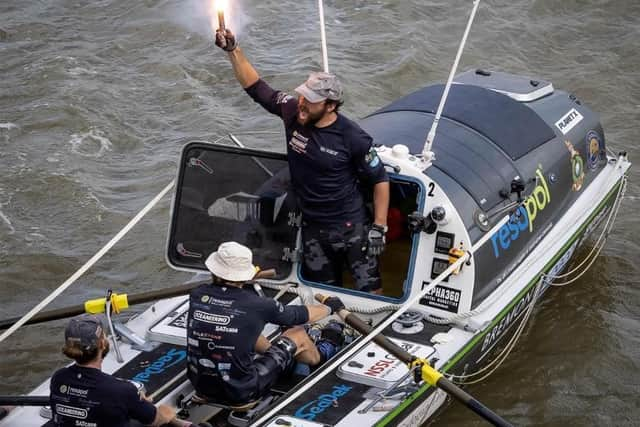

Dolphins, whales and sharks were just some of the animals to accompany the Marines, with some of them often swimming close enough to the boat that they could touch them.
The crew described the dolphins as the mammals they enjoyed the most, with their day often being lifted by the dolphins rushing around their boat in their large numbers.
However, Jordan also described seeing a school of blue whales, the largest sea mammal in the world, as an incredible experience and one that he will never forget. Another important aspect of staying sane for the team was keeping in contact with family and friends back home.
Advertisement
Hide AdAdvertisement
Hide AdAlthough this is tricky when thousands of miles out to sea, it was possible to speak to their families via a satellite phone, in addition to keeping the world updated with various blogs and questionnaires on their Instagram account.
This was an integral part of keeping the team motivated, pushing constantly towards their target of arriving back in London. One of the most momentous moments was when they entered the English Channel, and phone signal came back to their phones after nearly three months at sea, from here they were able to keep friends and family updated daily as to when the expected arrival date would be.
Despite being so close to the finish line, the crossing back into English waters was among the perilous challenges. The sea path from the Atlantic into the English Channel is notoriously difficult, as the two different currents combine to create difficult conditions.
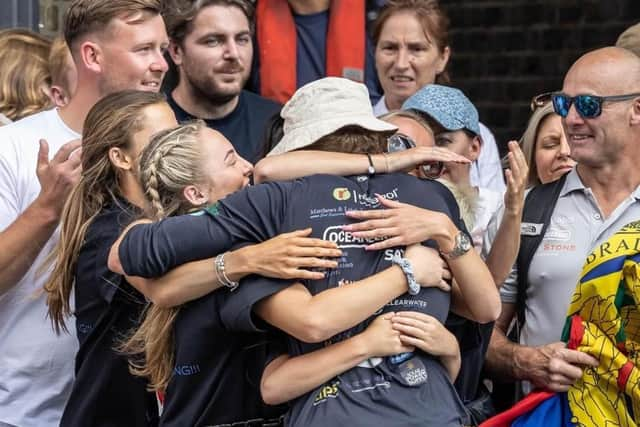

Combine this with the added peril of being one of the world’s busiest shipping lanes, and the end of the journey was fraught with danger. At this point they even experienced a man overboard, as one of the team was flung out to sea when a strong wave hit.
Advertisement
Hide AdAdvertisement
Hide AdThankfully no harm was done, and their team member was pulled back to the boat safely. After spotting the white cliffs of Dover, within a few days the end was in sight for the team.
The scenes as they were roared on down the Thames were a joy to watch, and pure elation for the men on board. With sea legs and castaway-style hair and beards, they stepped back on shore at 2pm on August 12.
The celebrations that evening went on long into the night, and every food – and beer – craving was satisfied after months of dried food.
Already Jordan is planning his next adventure, although the oceans are off bounds for now. He said: “It’s been really tough re-integrating back into society. I am struggling in large groups of people and being back in the real world. My body is also catching back up and recovering, as my legs were shrunken and weak after months of being at sea. But when I’m ready, I’m thinking the North Pole.”
To see more of the expedition and what it entailed head to the Ocean Revival Instagram page @oceanrevivaladventures.